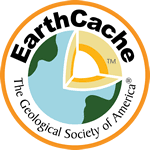PLEASE NOTE: There have been a proliferation of cache logs received recently where answers to the earthcache questions are never sent. This will no longer be permitted. I reserve the right to delete all logs not meeting this basic earthcache requirement. Effective 8/12/20, all cachers must submit an email or a message with answers to the questions below, ideally before, but within seven days of logging this cache as a find. I understand there are times when access to the internet is limited. When that is the case, I will be happy to work with you on timelines if needed.
Welcome to Kaw River State Park! Hours are 6:00 am to 9:00 pm every day. The park may be closed during times of inclement weather. At present, the park consists of 76 acres of land on the south bank of the Kansas River.
The Kansas River, also known locally as the "Kaw", begins at the confluence of the Smoky Hill and Republican Rivers, just east of aptly named Junction City. It flows approximately 148 miles and joins the Missouri River at Kaw Point in Kansas City, KS.
The river generally follows the southernmost boundary of North American glaciation, which occurred during the Pleistocene period of geologic time, about 2,588,000 to 11,700 years ago. Glaciers moved down from the north approximately one million years ago, passing over hills and valleys, and at times reaching over 500 feet in thickness. The Kansas River was most likely formed as these glaciers melted and drained away.
The glaciers brought with them huge amounts of rock, including Sioux quartzite, sand, gravel, and clay ground from the surfaces of Minnesota, Iowa, and South Dakota. The sediment that makes up the riverbed of the Kaw consists of these materials, as well as native limestone, sandstone, and shale, all of which are very soft. The soft nature of the riverbed is the reason the river is almost never clear.
At this location, river bars are observable when the river is flowing at a normal rate of speed. A river bar is an elevated region of sediment. There are three types of bars, mid-channel bars (also called braid bars), point bars (common along the banks of meandering rivers), and mouth bars (common in river deltas). Bars are typically found in the slowest moving, shallowest parts of rivers and streams and are often parallel to the shore. The sediment that makes up many of the river bars in the Kansas River is rich enough to sustain plant life.
The coordinates for this EarthCache take you to a public access site for the river on its south bank. This site offers a nice, close-up view of the river.
In order to log this EarthCache, please email me the answers to the following questions:
1. Why is the river cloudy as opposed to clear?
2. What is your estimate of the river’s width at this point?
3. What type of river bar(s) are present in this section of the river? What did you observe about the bars that led you to that conclusion?
4. Name the three types of native rock that aid in the make up of the sediment in the bars.
Feel free to post lots of photos. I love looking at them!








REFERENCES
http://kansasriver.org/learn/life-on-the-kaw/the-historic-kaw/
https://en.wikipedia.org/wiki/Kansas_River

Congratulations to Tuxedo@cat for being First to Find!
